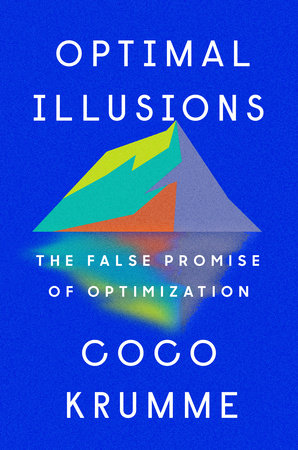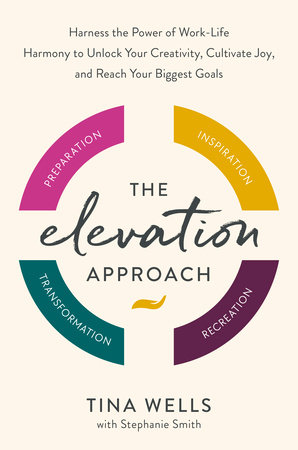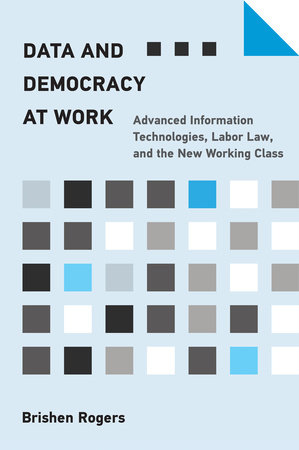Quick Summary
One Sentence Summary
“The Times” by Adam Nagourney provides an insightful exploration of the historical and contemporary significance of The New York Times, detailing its impact on journalism and society.
Big Idea
The book delves into how The New York Times, a venerable institution in journalism, has shaped public discourse, adapted to digital transformation, and maintained its relevance and integrity in a rapidly evolving media landscape.
Five Key Ideas
- Evolution of Journalism: Chronicles the evolution of The New York Times from a traditional newspaper into a digital news leader, highlighting the challenges and innovations along the way.
- Impact on Society and Politics: Examines how the newspaper’s reporting has influenced public opinion, policy-making, and political landscapes domestically and internationally.
- Technological Adaptation: Explores the paper’s transition to the digital era, including its forays into online journalism, multimedia content, and the use of social media.
- Ethical Journalism: Discusses the ethical dilemmas and journalistic standards that The New York Times has navigated in its reporting, including issues of bias, objectivity, and accountability.
- Future of News Media: Speculates on the future of news media and the role of established institutions like The New York Times in an age of information overload and declining trust in media.
Actionable Advice
Readers interested in media, journalism, or history can learn from The New York Times’ adaptability, commitment to ethical journalism, and strategies for staying relevant in a changing media environment.
About the Author
Adam Nagourney, a seasoned journalist and author, brings extensive experience in news reporting and a deep understanding of media dynamics, particularly within the context of influential news organizations like The New York Times.
Read Next
For further exploration of media and journalism, consider “The News: A User’s Manual” by Alain de Botton, “Trust Me, I’m Lying: Confessions of a Media Manipulator” by Ryan Holiday, and “The Elements of Journalism” by Bill Kovach and Tom Rosenstiel, which offer diverse perspectives on the role of news in society, the ethics of journalism, and the challenges faced by the media in the digital age.
In Depth
Evolution of Journalism
“The Times” by Adam Nagourney dives deep into how The New York Times has evolved. It’s not just about ink and paper anymore. This iconic newspaper has been riding the wave of change, transforming from a traditional print medium to a leader in digital news.
In the past, The New York Times was the go-to for morning news with coffee. But times change. The book captures this journey brilliantly. It talks about when the internet first hit. People thought newspapers would fade away. But The New York Times didn’t just adapt; it led the way.
One detailed example from the book highlights this evolution. Remember the 2016 U.S. Presidential election? The Times didn’t just report; it innovated. They used real-time data, interactive maps, and live updates. This wasn’t just news; it was an experience. Readers could watch the election unfold, almost feeling the pulse of every state’s vote count.
Nagourney writes, “The 2016 election night coverage was a turning point. The New York Times showed that a traditional newspaper could do more than adapt to the digital age; it could drive innovation in it.”
This quote sums up the spirit of The Times. It’s not about surviving; it’s about leading. The book shows how the paper didn’t just switch to digital. It reimagined journalism for the digital age. It’s not just articles online. It’s multimedia storytelling, podcasts, and interactive features.
The evolution isn’t just in how news is delivered. It’s also about what news is covered. The New York Times expanded its reach. It’s not just New York or the U.S. anymore. It’s global stories, diverse voices, and issues that resonate worldwide.
The book also touches on the challenges of this evolution. It wasn’t smooth sailing. There were layoffs, budget cuts, and debates over paywalls. Yet, The Times stayed true to its core – quality journalism. It balanced staying profitable with keeping the public informed.
In this digital era, news comes at us fast. Social media, blogs, and apps bombard us with information. The New York Times stood out by offering depth and reliability. Readers knew they could trust what they read.
The evolution of The New York Times is a story of resilience and innovation. It’s about a newspaper that could have become a relic but chose to redefine itself. Nagourney’s book captures this spirit perfectly. It’s a reminder that in a world of constant change, staying true to your core values while embracing innovation is key.
Impact on Society and Politics
The New York Times isn’t just any newspaper. It’s a giant in shaping how we see the world. Its influence on society and politics is huge, and Adam Nagourney’s book captures this perfectly.
Think about how the Times covers big stories. It’s not just reporting. It’s deep dives, analysis, and sometimes, it shakes things up. The book gives us a clear picture of this impact, especially in political realms.
A great example is the coverage of the Watergate scandal. The Times didn’t just follow the story; it added layers to it. Their reporting was relentless, digging deeper than most. This wasn’t just news; it was a catalyst for political change. The scandal eventually led to President Nixon’s resignation.
Nagourney writes, “The Times’ coverage of Watergate exemplified the power of the press to hold the powerful accountable. It wasn’t just about informing the public; it was about safeguarding democracy.”
This quote nails it. The Times isn’t just a newspaper. It’s a watchdog. It’s about keeping those in power in check. That’s a big responsibility, and the Times takes it seriously.
But it’s not just about politics in the U.S. The Times has a global footprint. It covers international politics, wars, and global crises. Its reporting on the Syrian Civil War, for instance, brought the human side of the conflict to readers worldwide. It’s not just about battles and politics; it’s about people, their struggles, and their stories.
The book also shows how the Times has evolved in covering societal issues. It’s not shy about tackling tough topics. Issues like race, gender, and climate change get front-page treatment. The Times doesn’t just report on these issues; it sparks conversations. It gets people talking and thinking.
In a world where news can be polarizing, the Times strives for balance. It’s not about taking sides. It’s about presenting facts, different perspectives, and letting readers form their own opinions. This approach has made the Times a trusted source in an age of skepticism.
The impact of the Times on society and politics is a story of influence and responsibility. It’s about a newspaper that doesn’t just report news. It shapes how we understand our world. Nagourney’s book brings this to life, showing us the power and purpose behind the headlines.
Technological Adaptation
Adapting to tech isn’t easy, especially for an old-school newspaper. But The New York Times didn’t just adapt; it became a trendsetter. The book dives into how the Times embraced the digital world, changing the game in journalism.
One standout example is their mobile app launch. When smartphones hit the scene, everyone was figuring things out. The Times didn’t just jump on the bandwagon; it led the charge. Their app wasn’t a simple news feed. It was a complete experience, designed to make news consumption seamless and interactive.
The author notes, “The launch of the Times’ mobile app was a statement. It said, ‘We’re not just surviving in the digital age; we’re setting the pace.'”
This quote shows the Times’ mindset. They weren’t playing catch-up. They were leading the race. Their app brought the news to people’s pockets. It was innovative, user-friendly, and ahead of its time.
But it’s not just about apps and websites. The Times explored new storytelling formats. They used videos, podcasts, and even virtual reality. Imagine reading about a remote village and then experiencing it through VR. That’s the kind of immersive journalism the Times ventured into.
Their use of data journalism is another highlight. The Times didn’t just report statistics; they made them come alive. Interactive graphs, real-time election maps, and data-driven stories. They showed that numbers could tell powerful stories.
The book also touches on how the Times handled the shift in revenue models. With print advertising declining, they had to rethink money. They introduced a paywall, but it was more than that. They offered something worth paying for. Quality journalism, exclusive content, and a top-notch user experience.
The Times’ journey into the digital age is a story of innovation and bold moves. They didn’t just join the digital revolution. They helped shape it. The book paints a clear picture of a newspaper transforming into a digital powerhouse, setting an example for others in the industry.
Ethical Journalism
In a world where news can be sensational, The New York Times sticks to ethics. It’s not just about breaking news; it’s about breaking it right. The book takes us through how the Times handles the tricky balance of being timely and truthful.
A prime example is their coverage of the Iraq War. When stories about weapons of mass destruction were swirling, the Times took a stand. They questioned the narrative, digging deeper than the official line. This wasn’t popular, but it was necessary. They chose truth over trend, a tough call in high-stakes reporting.
The author highlights this, saying, “In an era where headlines often chase clicks, the Times’ Iraq War coverage was a reminder of journalism’s true purpose: to question, to clarify, and above all, to hold the truth as sacred.”
This quote hits home. In a rush for ratings, truth can get lost. The Times shows that integrity in reporting is non-negotiable. They’re not about being first; they’re about being factual.
But it’s not just in war reporting. The Times has been a voice for the voiceless, too. Their investigations into sexual harassment and abuse, for example, sparked global conversations. They didn’t just report these stories; they gave them the gravity they deserved. It was journalism with a purpose, shining a light on dark corners of society.
Ethical journalism also means acknowledging mistakes. The Times hasn’t been perfect. But when they slip, they own up. Corrections aren’t hidden in fine print; they’re front and center. It’s about accountability, a key pillar of ethical journalism.
The book shows how the Times navigates the ethical minefield of journalism. In an age of misinformation and bias, their commitment to ethics stands out. It’s a reminder that in journalism, how you report is as important as what you report. The New York Times, through its ethical practices, sets a standard in the industry.
Future of News Media
The future of news is a hot topic, and The New York Times is right in the middle of it. They’re not just following trends; they’re thinking ahead. The book delves into how the Times envisions the future of journalism, with a mix of caution and optimism.
A standout example is their focus on younger audiences. The Times knows that millennials and Gen Z consume news differently. So, they’re adapting. They’re not ditching depth, but they’re making their content more accessible and engaging for digital natives.
The author observes, “The Times recognizes that tomorrow’s readers aren’t just scrolling through articles. They’re engaging with news in diverse, dynamic ways, and the paper is evolving to meet these new expectations.”
This quote captures the Times’ forward-thinking approach. They’re not just keeping up with the times; they’re shaping them. They understand that the future of news isn’t just about technology; it’s about understanding and connecting with the audience.
But it’s not just about demographics. The Times is also exploring new formats. They’re experimenting with AI, exploring how it can enhance reporting and storytelling. It’s not about replacing journalists with robots; it’s about using tech to tell stories better.
Sustainability is another key focus. The Times knows that quality journalism needs funding. They’re exploring new revenue models, beyond ads and subscriptions. It’s about finding a balance – making sure the news remains accessible but also ensuring that it’s financially viable.
The future of news media, as seen by the Times, is about staying true to the principles of journalism while embracing change. It’s a delicate balance, but one they’re navigating with a clear vision. The book paints a picture of a media institution that’s not just surviving in the digital age but thriving and leading the way.
Actionable Advice
-
Stay Informed: Regularly read diverse news sources, including The New York Times, to understand different perspectives.
-
Embrace Digital: Use news apps and digital platforms for real-time updates and interactive content.
-
Critically Evaluate: Don’t just consume news. Analyze and question it to form well-rounded opinions.
-
Support Ethical Journalism: Subscribe to or financially support news outlets committed to ethical reporting.
-
Educate Yourself: Learn about the history and evolution of journalism to appreciate its role in society.
-
Stay Open-Minded: Be receptive to new formats like podcasts or data journalism for a richer news experience.
-
Engage with Content: Participate in discussions, share articles, and contribute to the discourse around news stories.
-
Acknowledge Bias: Recognize your own biases and those in news reporting to develop a more objective viewpoint.
-
Use Social Media Wisely: Follow reputable news sources and journalists on social media for quick updates and insights.
-
Think Future-Oriented: Stay curious about the future of journalism and how technology will continue to shape it.
About the Author
Adam Nagourney, a renowned journalist, has made a significant mark in the field of journalism. His career is marked by a deep commitment to uncovering truth and presenting news with integrity. He’s known for his incisive reporting and in-depth analysis, especially in political journalism. Nagourney’s work, characterized by its thoroughness and accuracy, reflects his belief in the power of informed journalism to shape public discourse. With years of experience in some of the most prestigious newsrooms, he brings a wealth of knowledge to his writing. His insights into the workings of the media industry, particularly in the context of influential organizations like The New York Times, are both profound and enlightening. Nagourney is not just a reporter; he’s a storyteller who understands the impact of news on society. He advocates for ethical journalism and the importance of adapting to the digital age while maintaining journalistic integrity. His writings often explore the evolving landscape of news media, highlighting the challenges and opportunities it presents. Adam Nagourney’s work is a testament to his belief in the crucial role of journalism in upholding democracy and informing the public.
Read These Next
You might like these similar books
- “The News: A User’s Manual” by Alain de Botton
- “Trust Me, I’m Lying: Confessions of a Media Manipulator” by Ryan Holiday
- “The Elements of Journalism” by Bill Kovach and Tom Rosenstiel
- “Flat Earth News” by Nick Davies
- “Amusing Ourselves to Death: Public Discourse in the Age of Show Business” by Neil Postman
FAQ
Q: What is the main focus of the book?
A: The book explores the evolution of The New York Times, highlighting its impact on journalism and society.
Q: Does the book cover The New York Times’ transition to digital journalism?
A: Yes, it discusses the newspaper’s shift to digital platforms and how it adapted to the changing media landscape.
Q: Are there examples of specific news events covered in the book?
A: Yes, the book includes detailed examples like the Times’ coverage of the 2016 U.S. Presidential election and the Iraq War.
Q: Does the book discuss the ethical challenges in journalism?
A: Absolutely. It delves into the ethical dilemmas The New York Times faced and how it maintained journalistic integrity.
Q: Is the book suitable for those unfamiliar with journalism or media?
A: Yes, it’s written in an accessible style, making it suitable for both media professionals and general readers.
Q: What can readers learn from the book?
A: Readers can learn about the importance of ethical journalism, adapting to digital changes, and the role of media in shaping public opinion.
Q: Who is the author, and what is his background?
A: Adam Nagourney, a seasoned journalist, known for his deep understanding of media dynamics and news reporting.







